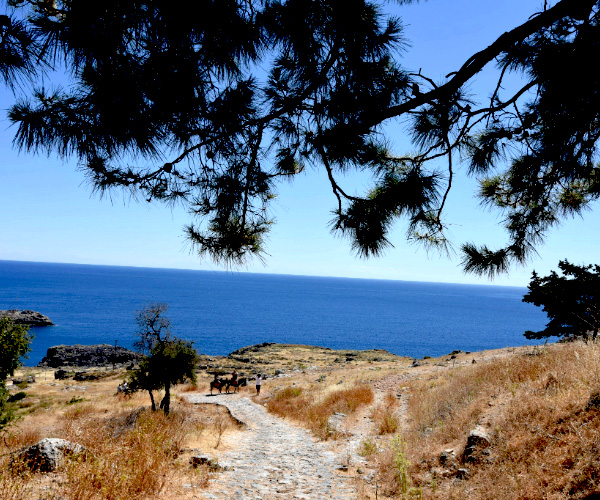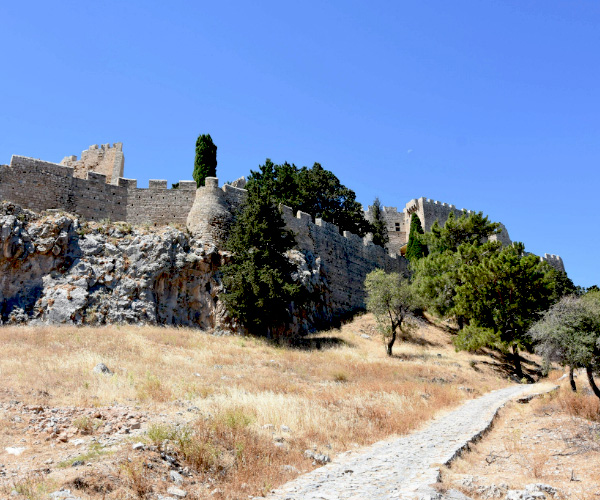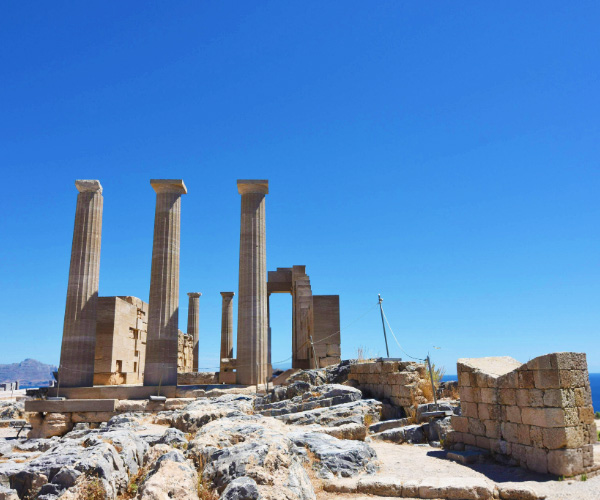Acropolis of Lindos: A Journey Through Time

I was dropped off a bit farther from Lindos’ main entrance, and the 15-minute walk was worth it. As I got closer, the sight of the Acropolis in the distance was simply mesmerizing. The ancient ruins perched on the hill immediately captured my attention. To the right, I noticed the Lindos information booth, though it was unmanned. Surprisingly, I didn’t need to pay for a ticket, possibly due to the pandemic, as they are currently allowing visitors in free of charge.
The Acropolis is one of Rhodes’ most significant archaeological sites and a major attraction. Archaeological excavations have revealed various artifacts, statues, and historical objects within the Acropolis.
My journey began with a stroll through narrow, winding streets lined with traditional, white-washed buildings and colorful shutters. Many shops offered traditional Greek crafts, souvenirs, and local delicacies.
Inside, I discovered the Temple of Athena Lindia, Propylaea, Stoa, Hellenistic Stairs, Altars, and Niche Shrines. A standout was the Byzantine church called the Church of Saint John (Agios Ioannis), a significant religious and historical site dating back to the 14th century.
Exploring further, I reached the highest point of the Acropolis and was treated to breathtaking views of the surrounding landscape, including the Aegean Sea and the town of Rhodes. The elevated position provided a vantage point for capturing stunning panoramas and appreciating the area’s natural beauty.
Note: The Acropolis is open year-round, but its hours of operation may vary depending on the season. Check websites for the most up-to-date information on opening hours and plan your visit accordingly. Ticket prices for the Acropolis of Lindos can vary depending on the ticket type and the season.
Climbing towards a historical treasure

I prefer to walk up to the Acropolis in Lindos instead of using donkeys. It’s more enjoyable for me and lets me take my time to soak in the scenic views.

As I stroll along, the Castle of the Knights of St John catches my eye. It’s a grand sight with its medieval walls towering above. This castle, built in the 14th century by the Knights Hospitaller, tells a tale of the Crusades and the medieval era.


The stairs up to the main entrance of the Lindos Acropolis aren’t just steps; they’re like a gateway, inviting us to step into the ancient world.
Exploring the Ruins of Acropolis

One of the coolest parts of the Acropolis is the Temple of Athena Lindia, dedicated to the goddess Athena. The original temple was built in the 4th century BC, probably around 300-280 BC. It’s been changed and fixed up over the years.
The temple is a great example of Doric architecture. It’s got Doric columns, which are known for being simple and strong, holding up the building. The temple’s look reflects the classic Greek style. It’s set up like many Greek temples, with a row of columns around the inner chamber (called the cella) that held Athena’s statue. On the short sides, there are six columns, and on the long sides, there are thirteen columns.
In front of the temple, there’s an altar where people would have done rituals and given offerings to Athena. The open area in front of the temple was probably used for ceremonies and events.


Acropolis of Lindos: Ancient Marvels Await

As I got closer to the Acropolis of Lindos, I saw the stunning entrance to this ancient sanctuary—the Propylaea. This ceremonial gateway greets visitors as they enter the Acropolis. With its impressive columns and architectural details, it offers a grand introduction to this sacred place.
The Byzantine Church of St. John
The Byzantine church inside the medieval castle shows that people have been worshiping and passing down their cultural heritage here for centuries. Both the Byzantine Empire and the medieval Knights of St. John have influenced the Acropolis of Lindos, leaving their marks for us to see today.

See the Ancient Map

- Semicircular Exedra 6. Hellenistic Vaults 11. Temple of Athena Lindia
- Triemiolia (Relief Ship) 7. Roman Temple 12. Portico of Psithyros
- Medieval Stairway 8. Late Hellenistic Stairway
- Medieval Headquarters 9. Hellenistic Stoa
- Byzantine Church 10. Propylaia Stairway
